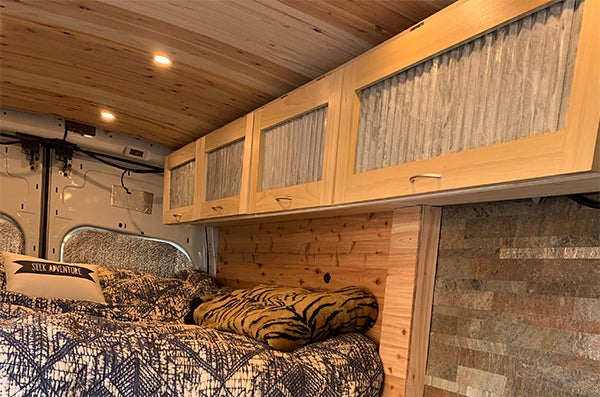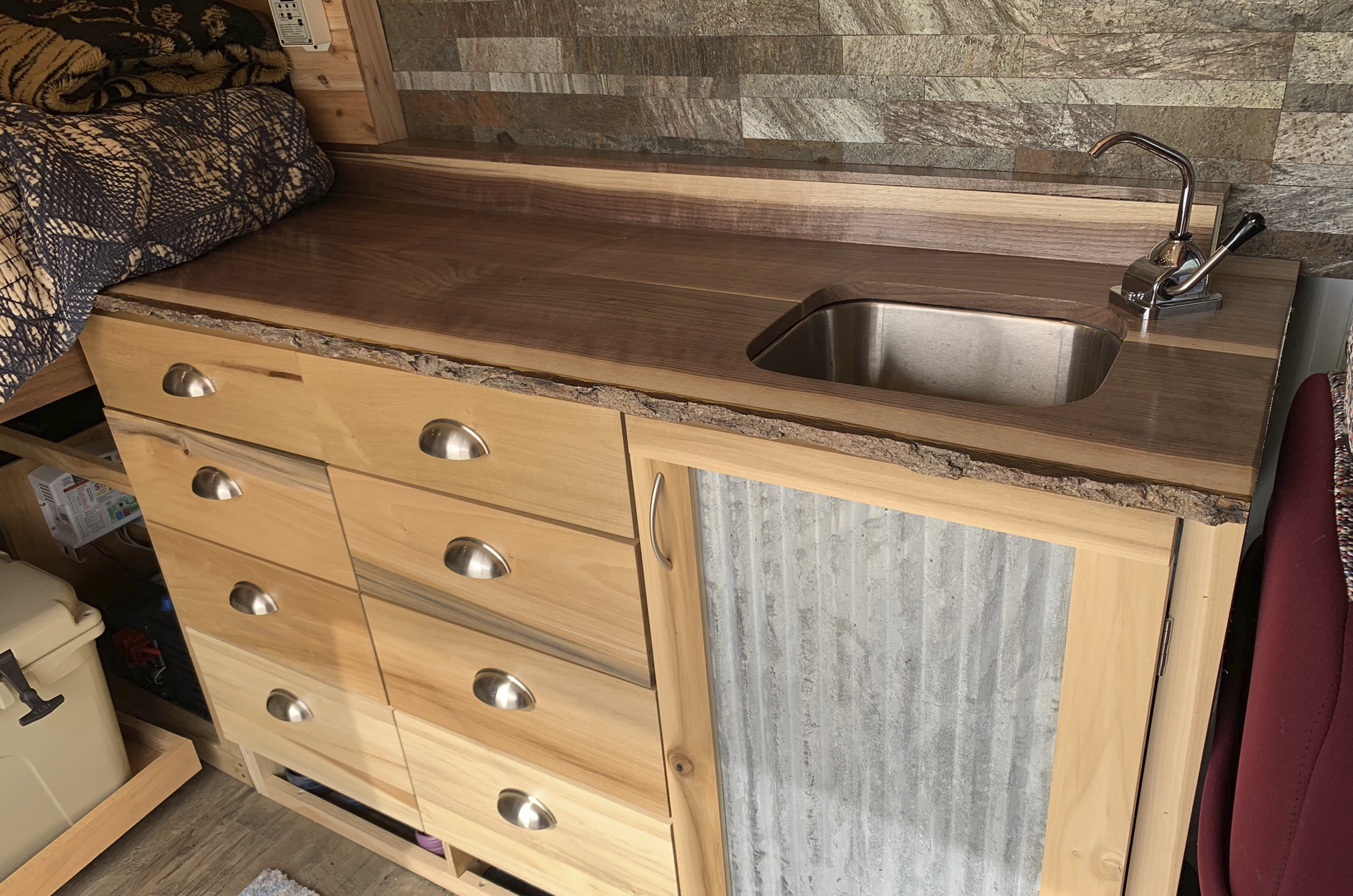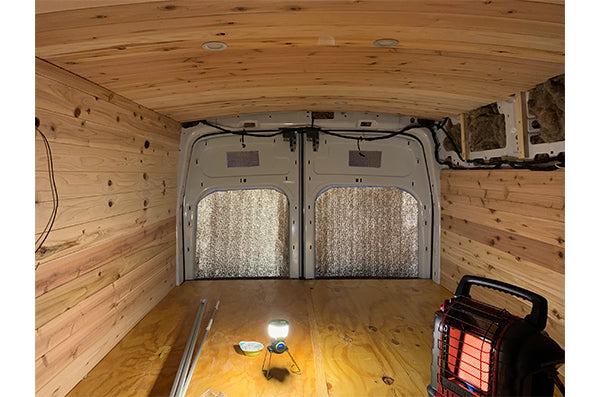When it came time to complete our cabinets and drawers, we knew we needed to add some additional texture/color. At this point, the entire finish of the van was wood, which we loved, but it needed a bit more depth.
With some research (aka lots of Pinterest, Houzz and Google image searches) we decided to add corrugated metal inlays on all doors (this included the upper cabinets and big door under the kitchen sink). We wanted the corrugated metal to have an aged look that was not so polarizing on the matte wood.
After a bit of online shopping, we realized that it was difficult to find the right aged look in the size/dimensions needed for our doors. Since there are various degrees to aging from a slight dullness and patina to super dull and rusty (we wanted a slight dull/patina look), we quickly decided -CRAFT PROJECT!
We started out by purchasing 6 2’x3' corrugated galvanized steel sheets (we used 5 of the sheets for this project). Next, we did some more research on how to age them. Like everything else, there are TONS of options for aging. People suggest things like toilet bowl cleaner, bleach, white vinegar, torching, hydrogen peroxide, and more. The most important thing for us was to keep it simple and luckily, our decision paid off and worked like a charm. We decided to work with white vinegar because 1) it was inexpensive and 2) while smelly, it’s not as full of chemicals as some of the others.


Here’s the process:
That’s it! You can now put up your metal wherever you’ve planned to use it!





2 comments
Sabrina
Love your site and all the details on your build. I do want to caution you, however, on the real possibility that the galvanized steel contains lead, due to the presence of zinc, which is often contaminated with lead. I’d purchase some 3M lead check swabs at Home Depot or wherever, and give them a wipe. Of course, the limits of detection on those swabs are pretty high. This means that the max allowable lead content in the surface of an item intended for children is 90ppm lead. The swabs only start to detect at around 600ppm. I have found Lead Safe Mama’s site to be a real eye-opener about these things. Best wishes.
Love your site and all the details on your build. I do want to caution you, however, on the real possibility that the galvanized steel contains lead, due to the presence of zinc, which is often contaminated with lead. I’d purchase some 3M lead check swabs at Home Depot or wherever, and give them a wipe. Of course, the limits of detection on those swabs are pretty high. This means that the max allowable lead content in the surface of an item intended for children is 90ppm lead. The swabs only start to detect at around 600ppm. I have found Lead Safe Mama’s site to be a real eye-opener about these things. Best wishes.
Brian
Thanks for the detailed posts! I have a question regarding your overhead cabinets- what depth did you select for the cabinets and how did you decide on that size?
Thanks
Thanks for the detailed posts! I have a question regarding your overhead cabinets- what depth did you select for the cabinets and how did you decide on that size?
Thanks